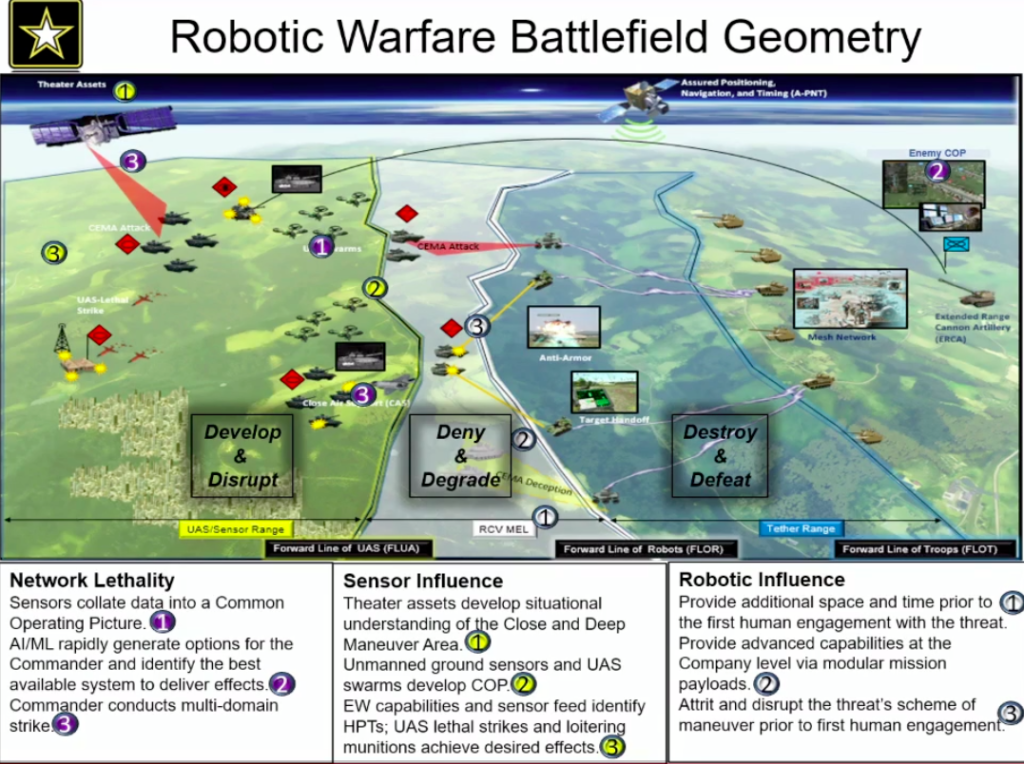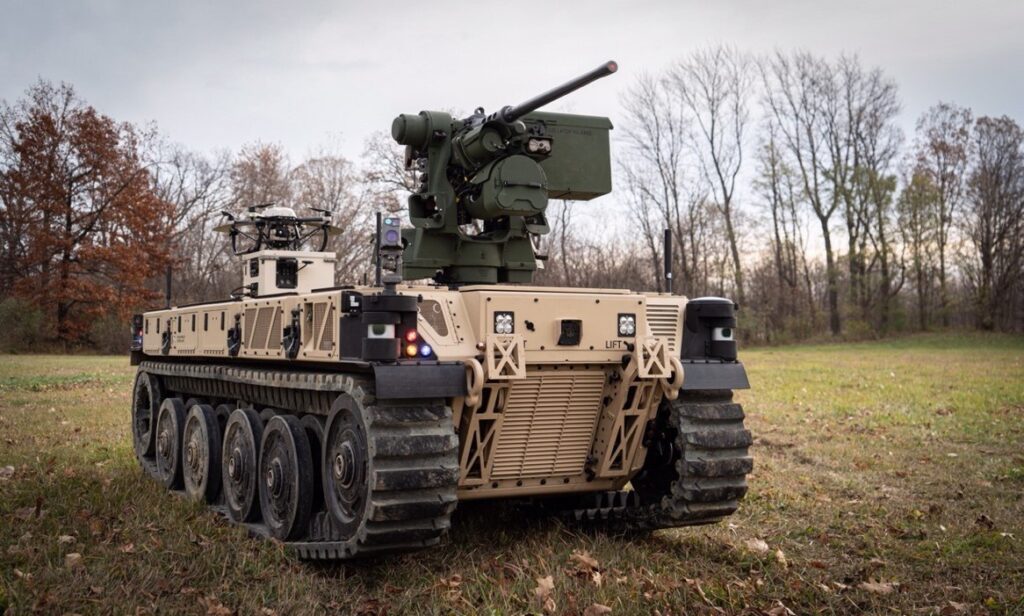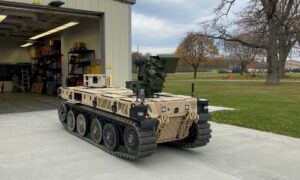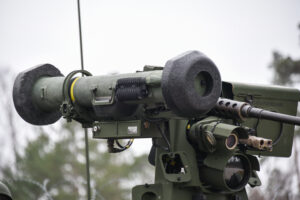WASHINGTON: Robot-builder QinetiQ formally delivered the first of four experimental Robotic Combat Vehicles (Light) to the Army on Nov. 5, the company has announced. They will be used alongside four Textron-built RCV-Mediums in field tests.
After their delivery, the Army plans to buy 16 more of each variant as it scales up to more complex experiments. Those 2022 exercises will determine the feasibility of the service’s ambitious plans for a “forward line of robots” to precede human troops into battle.
The RCV-Light is a “very collaborative effort” that pulls together technologies from QinetiQ, industry partner Pratt Miller, and the Army’s Ground Vehicle Systems Center, QinetiQ’s director of unmanned systems tells me in an email. It also builds on “years of testing” of earlier versions by the famed Marine Corps Warfighting Laboratory in Quantico, Va., Jonathan Hastie says.
The platform itself is Pratt Miller’s EMAV (Expeditionary Autonomous Modular Vehicle), a low-slung hybrid-electric vehicle with tracks to cover rough terrain, with a maximum speed of 45 mph. It’s robust enough to carry 7,200 pounds of payload – more than its own 6,800 lbs — yet compact enough to fit aboard a Marine V-22 tiltrotor or an Army CH-47 helicopter. This is the system tested by the Marines.
QinetiQ provided much of the electronics and software: “the core robotic control and computing system, network and communications systems, perception and vision systems; and the safety control,” Hastie told me.
Less tangible but even more critical is QinetiQ’s implementation of a Modular Open Systems Architecture (MOSA), compliant with the Pentagon-defined Inter-Operability Profile (IOP) for ground robotics. This is the set of technical standards and common interfaces that let RCV plug-and-play a wide range of different equipment packages for specific missions.
This specific vehicle features a Kongsberg CROWS-J weapon station – basically, a remote-controlled mini-turret combining a machine gun and a Javelin anti-tank missile launcher. Normally CROWS is installed on a manned vehicle, allowing the crew to operate their weapons and sensors without exposing themselves in an open hatch, but RCV includes a long-range control link to let humans operate it from different vehicle altogether. The robot can’t open fire without a human pulling the trigger. (It also can’t reload the Javelin without human help, so it effectively has one missile per mission, although there’s plenty of machine gun ammo aboard).
The RCV-L also carries a mini-drone, the HoverFly Tethered Unmanned Aerial System, which it can launch to look over buildings, hills, and obstacles while the ground vehicle stays hidden. The drone is physically connected to the robot by a power and communications cable, even during flight – hence the term “tethered.” That does limit its range but effectively allows it unlimited flight time.
The Army’s Ground Vehicle Systems Center provides the software to control both the drone and the weapons station. GVSC also developed the autonomy package. It’s a version of the common software the Army is developing for a variety of robotic vehicles, allowing them to navigate cross-country and around obstacles without constant human intervention. The less help the machines need from humans, the more useful they can be in battle.

The Army envisions drones and ground robots advancing ahead of humans in future wars. (Enemy forces are at the left of the chart, friendly forces are moving right to left).
Head start: Early ’25 may be first flight for Black Hawk with T901 engine
Sikorsky is using remaining FARA dollars to test out the new T901 engine in anticipation of integrating it on a UH-60 M Black Hawk later this year.





























